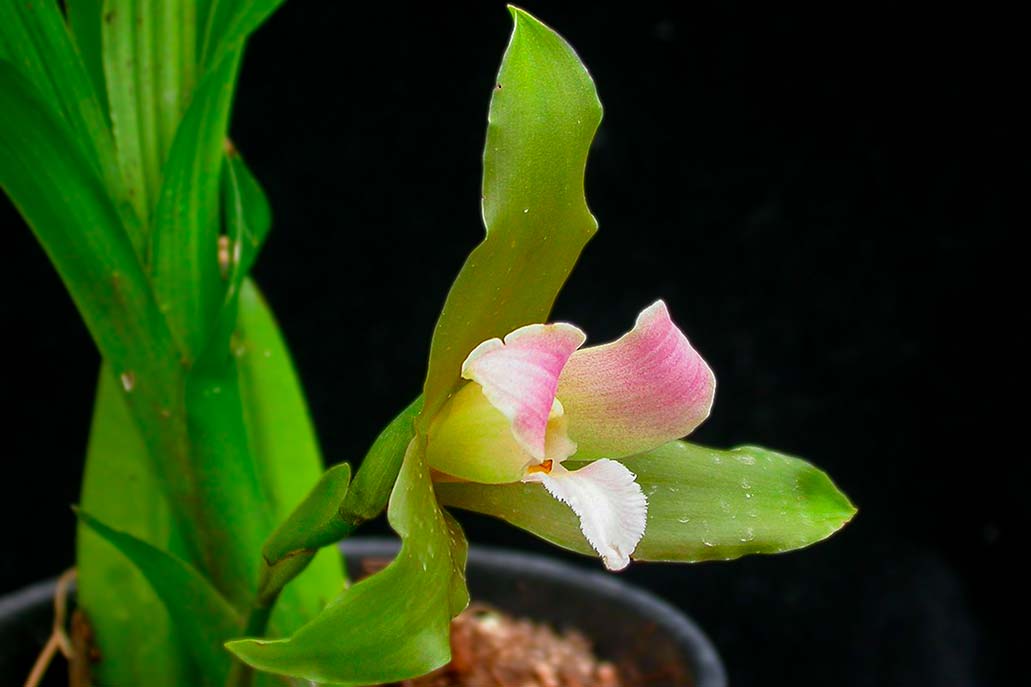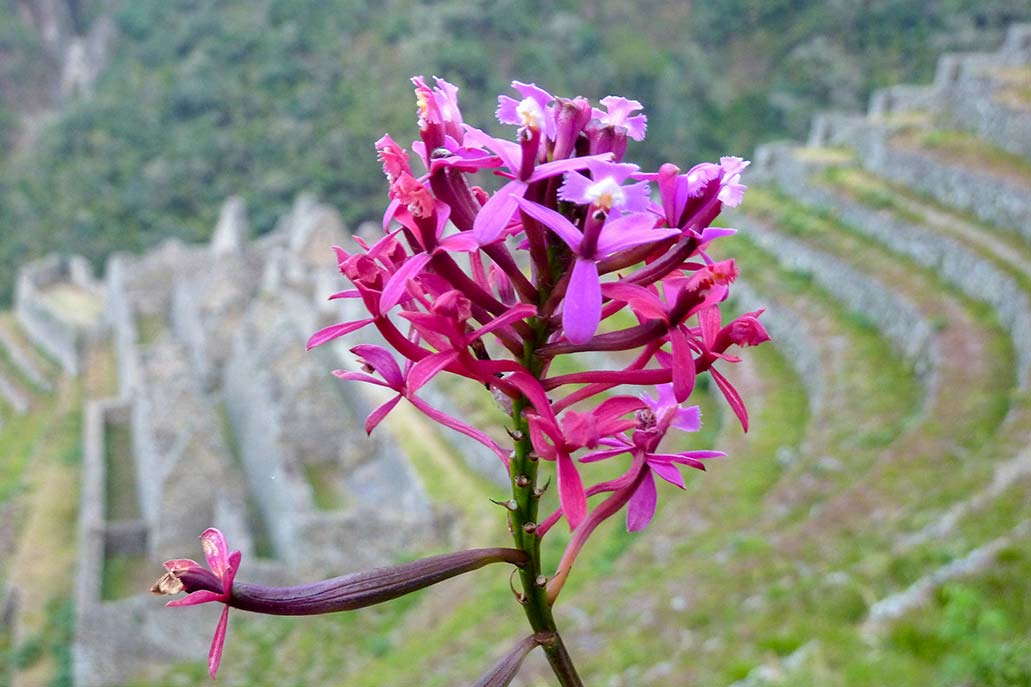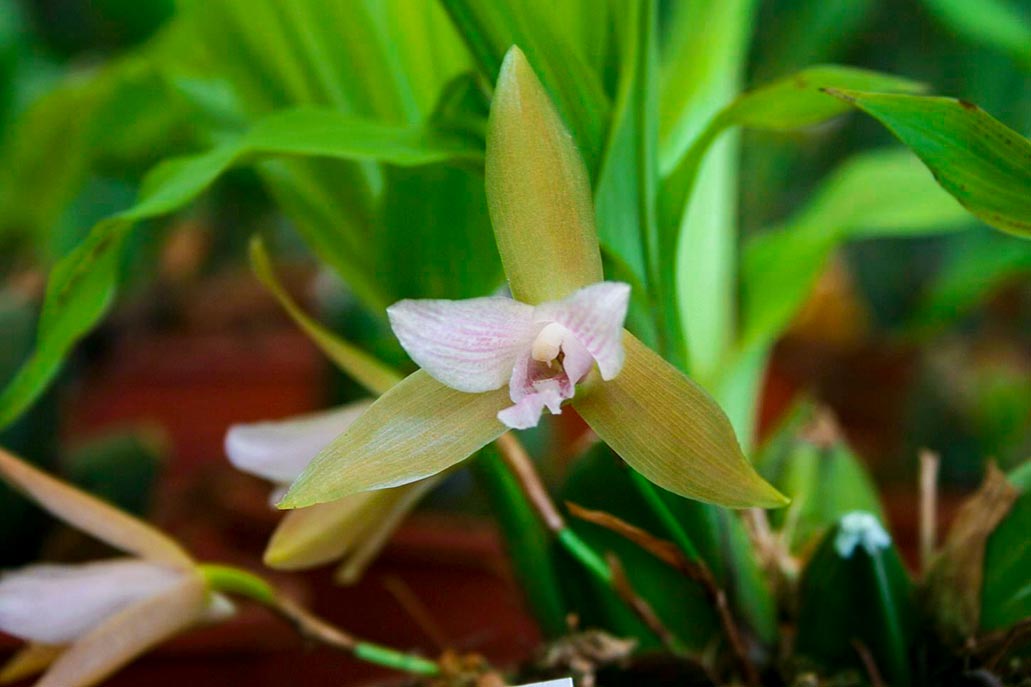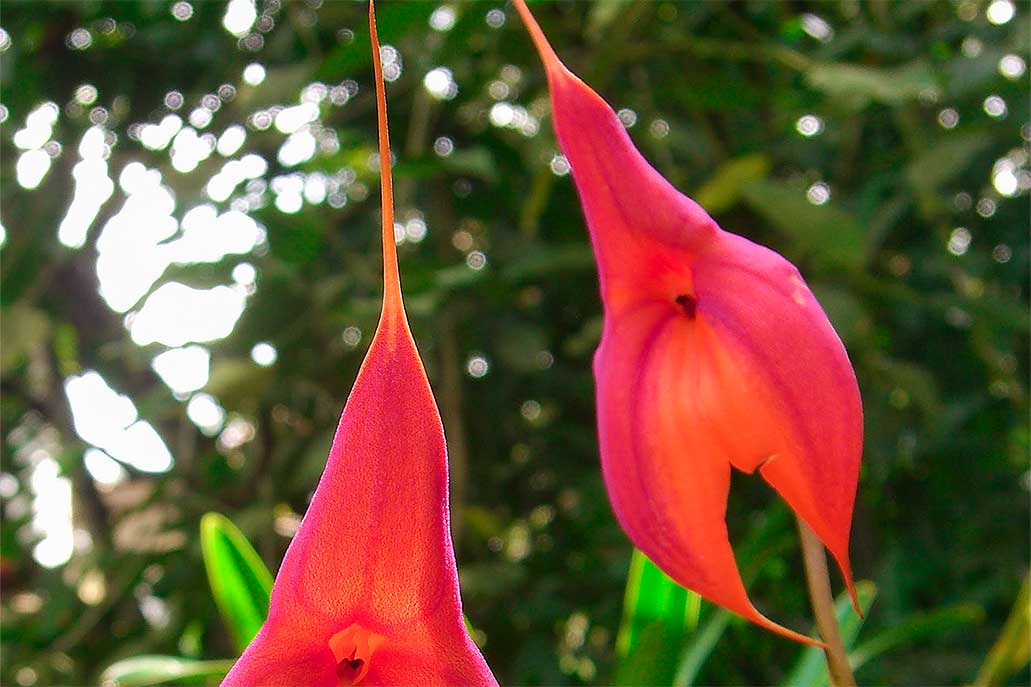Orchids in Machu Picchu, discover the Orchid Conservation Center
Many plants and flowers grow in Machu Picchu, but orchids for their beauty, particularity, and eccentric colors, are positioned above the rest. These plants grow and develop, thanks to the climate of the cloud forests that extend in Machu Picchu. This climate is indispensable for orchids to grow without problems. Likewise, the orchids that can be found throughout Machu Picchu’s ecological sanctuary are native, which means that some species are unique in the world. Thanks to the work of conservation and proper control of these beautiful plants, several new species are still being found today. Here is more information about the orchids of Machu Picchu.
Content
The value of orchids at Machu Picchu
The value of orchids in Machu Picchu transcends much more than what is believed. The growth of these plants is due precisely to the humidity that is registered in the cloud forests. This is the place where Machu Picchu was built and where an adequate production area was established for the strengthening of orchids. However, cloud forests are very susceptible to suffering great damage, this is, a product of climate change. In some parts of the world, where these cloud forests can also be found, damage to the flora has been recorded due to the increase in temperatures.
The damage is often irreversible because it directly affects the fauna and especially the flora. This would be the case for orchids. Orchids grow only in conditions that provide them with cloud forests, an excellent amount of water, a temperate climate, and especially a continuously humid soil. The value of orchids is based on the fact that they are a means to measure the climatic condition of the place. A single change in the humidity, or the temperature of the place, could considerably damage the growth of these.
Likewise, generate and promote different programs for the care of the place as the fact that the tourist district (Machu Picchu Pueblo) has the recognition of zero carbon production. This makes it, at the same time, a truly sustainable destination. Most of the waste generated by mass tourism is reused for a new conscious use and preservation of the environment. The different specialists interested in the care of orchids, saw the need not only to take care of the geographical space but also to have extensive control of all the species that live in the cloud forests of Machu Picchu. In this sense, it is important to highlight the work of the different organizations and workers who strive, many times to highlight the importance of the place. All these works contribute to the sustainable development of Machu Picchu.
One of these non-profit organizations is Inka Terra Asociación and Inka Terra Machu Picchu Hotel. Non-state organizations that consider this work important and have been doing it since 1978. The first work that was done was to generate different inventories of orchid species. Also, other species that intervene directly in the production of these as insects and some other mammals transfer the pollen to other sectors. They are currently working together with the Geographic Society, and Conservation International, as well as with the presence of national and international universities. They also carry out some projects with support and work together with SERNANP and other national institutions.
Carmen Soto was one of the researchers of Inka Terra Machu Picchu Pueblo Hotel. She worked for 22 years as a biologist and coordinator of most of the projects that were developed for the preservation of the different species that were found. Also because of her important contribution, new species were found, some of them are dedicated to her and have part of her name. Thanks to his important contribution, important contributions were made to the conservation of the fauna and flora of Machu Picchu and even Choquequirao. Sadly, he passed away in 2021.
Machu Picchu, is the ideal and perfect climate for orchids
In Machu Picchu, you can find a semi-tropical climate. This is due to the presence of the high mountains that begin to descend to give way to the plains of the low jungle. The archaeological site of Machu Picchu was built on a quite fascinating terrain, it is located on the top of a mountain. It serves as a link between the Andes and the high jungle of Cusco. On the other hand, it is thanks to the presence of this important archaeological center that motivated the creation of natural conservation areas throughout the area.
The climate in Machu Picchu itself is comprised of an average temperature that ranges between 8°C and 22°C. In addition, it has a strong presence of rain. The rains have a greater presence during the wet season. This season is present at the end of the year, more precisely during the last days of November and extending until the first days of March. During this period you can find rainy days with abundant fog.
On the other hand, during the dry season, it is also possible to find rain. These rains will not be as frequent and will not have the same intensity as the rains of the wet season. It is normal for small showers and even drizzle to fall in the areas near Machu Picchu. Normally in this season, the rains are not usually a problem for visiting or exploring the orchids in the forests. However, with all these climatic variations and the presence of rain, everything necessary for orchids and other types of life to develop freely is fulfilled.
The best season to see orchids
Orchids, like all plants, go through a growth process. This growth can take place over five years, according to some research. This will depend a lot, also, on the type of orchid. These five years are measured from the moment the plant was planted and ended up flowering for the first time. Throughout the Peruvian territory, different species can be found, even reaching several 2700 to 3000 species of orchids.
Everything we mentioned will be done in a natural state, even that, can lead to the orchids developing in a longer time. Once they have bloomed, they can bloom again after a year. This is rather ambiguous, because, in the end, it will depend exclusively on the species of orchid. Another factor in optimizing the blooming of new orchid flowers will depend on the care, conditions, and minerals needed. Some of the orchids with good care can have a new bloom in just a few months. In this sense, it is important to have control of the moment when the orchid starts its life, its development, and its first bloom. It will be from that moment that the new bloom will begin to be measured and predicted. Of course, and again, you will have to take into account the species of the orchid.
Fortunately in Machu Picchu, there is the Orchid Conservation Center. This place, which we talked about above, has the care and growth control of more than 370 species of orchids. Of these, 19 species are native to the geography of the Machu Picchu Ecological Sanctuary. That is to say, only in this place, these orchids were seen for the first time in the world.
The Machu Picchu Orchid Conservation Center is the largest that can be found in all of Peru. To get to this place you have to get to the hotel, Inkaterra Machu Picchu Pueblo, which has beautiful decorations and luxury services. In addition to orchids, you can find the presence of some birds, such as the cock of the rock and hummingbirds that were rescued. In addition, the emblematic spectacled bear.
The best-known orchids of Machu Picchu
- Masdevalia Veitchiana – It is also known as the Waqanqi flower, in allusion to an Inca legend that narrates the fatal outcome of an Inca princess in love with an imperial soldier. This orchid reaches 14 centimeters. It is possible to appreciate it in its natural state near Wiñayhuayna. Unfortunately, it is in danger of extinction so the orchid is used to make some hybrid species and can preserve its particular colors and also the shape of its petals in the shape of a hummingbird. Since the petals are elongated and from a certain perspective, it looks like a small reddish hummingbird.
- Epidendrum sp. – Although it is one of the least known, it is one of the best-appreciated in the wild. They are only 2 centimeters long and grow in shady areas. It is one of the orchids that grow in the ground, but they require a lot of humidity and darkness for their optimal development. It is possible to see it in Intipata, part of the Inca Trail.
- Lycaste longipetala – It is one of the largest species and quite particular in shape. It is found in several places in the Sanctuary of Machu Picchu, but all of them require the shadows of the forests, along with the presence of fertile land but at the same time is sparse and with few obstructions. It is an orchid of regular size reaching 4 centimeters.
- Lycaste Macrophyla – It is an orchid that develops much more easily in lowland areas. Exactly at 1 800 meters above sea level. Although it has a robust shape, it can reach 6 centimeters. It usually grows in places of relative shade. This is necessary for its development. It is possible to see it more safely in the gardens of Mandor.
- Maximiliana alpestris – It is one of the orchids that have small petals. It reaches a wingspan of only 2 centimeters in its petals. Like other orchids, it has three similar petals and one that gives it its particular characteristic. It can grow only in soils that reach 2 600 meters above sea level.
- Myoxanthus Serripetalus – It has a certain resemblance to the wakanki flower, although with a more robust appearance. This aspect is practically in its petals, which are thicker than usual. This orchid grows in small colonies attached to trunks and even stones. It also requires shade and mosses where they also tend to settle. Despite its robust appearance, they are only 2 centimeters in size. It is possible to see it during the route to Wiñayhuayna.



